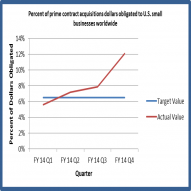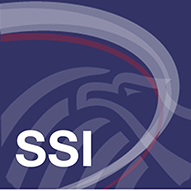- Home
- Agencies
- Department of Agriculture
- Department of Housing and Urban Development
- General Services Administration
- Department of Commerce
- Department of the Interior
- National Aeronautics and Space Administration
- Department of Defense
- Department of Justice
- National Science Foundation
- Department of Education
- Department of Labor
- Office of Personnel Management
- Department of Energy
- Department of State
- Small Business Administration
- Environmental Protection Agency
- Department of Transportation
- Social Security Administration
- Department of Health and Human Services
- Department of the Treasury
- U.S. Agency for International Development
- Department of Homeland Security
- Department of Veterans Affairs
- Goals
- Initiatives
- Programs
Using Goals to Improve Performance and Accountability
A goal is a simple but powerful way to motivate people and communicate priorities. Leaders in states, local governments, Federal programs, and in other countries have demonstrated the power of using specific, challenging goals combined with frequent measurement, analysis, and follow-up to improve performance and cut costs. These stretch goals can be effective at changing the way an organization does business. Federal agencies are using near-term and longer-term goals in a variety of ways to improve their effectiveness and efficiency.
The Federal Government operates more effectively when agency leaders, at all levels of the organization, starting at the top, set clear measurable goals aligned to achieving better outcomes. It is also vital that they regularly engage their organizations and delivery partners in critical reviews of progress on these goals. This leads to the discovery of what works and what does not. Federal agency leaders are increasingly using goals and measurement to reinforce priorities, motivate action, and illuminate paths to improvement. Agencies are also using goals in partnership efforts to improve outcomes.
Agencies establish a variety of performance goals and objectives to drive progress toward key outcomes. Agencies outline long-term goals and objectives in their strategic plans, and annual performance goals in annual performance plans. Twenty-four major Federal agencies also identify a limited number of two-year Agency Priority Goals aligned with their strategic goals and objectives. Agency Priority Goals target areas where agency leaders want to achieve near-term performance acceleration through focused senior leadership attention. A limited number of Cross-Agency Priority Goals are also adopted to improve cross-agency coordination and best practice sharing.
The Federal Government operates more effectively when agency leaders, at all levels of the organization, starting at the top, set clear measurable goals aligned to achieving better outcomes. It is also vital that they regularly engage their organizations and delivery partners in critical reviews of progress on these goals. This leads to the discovery of what works and what does not. Federal agency leaders are increasingly using goals and measurement to reinforce priorities, motivate action, and illuminate paths to improvement. Agencies are also using goals in partnership efforts to improve outcomes.
Agencies establish a variety of performance goals and objectives to drive progress toward key outcomes. Agencies outline long-term goals and objectives in their strategic plans, and annual performance goals in annual performance plans. Twenty-four major Federal agencies also identify a limited number of two-year Agency Priority Goals aligned with their strategic goals and objectives. Agency Priority Goals target areas where agency leaders want to achieve near-term performance acceleration through focused senior leadership attention. A limited number of Cross-Agency Priority Goals are also adopted to improve cross-agency coordination and best practice sharing.
�
Filter

Cross-Agency
Priority Goal: Cybersecurity

Cross-Agency
Priority Goal: The Freedom of Information Act (FOIA)

Cross-Agency
Priority Goal: Climate Change (Federal Actions)

Cross-Agency
Priority Goal: Job-Creating Investment

Cross-Agency
Priority Goal: STEM Education

Cross-Agency
Priority Goal: Customer Service

Cross-Agency
Priority Goal: Smarter IT Delivery

Cross-Agency
Priority Goal: Category Management

Cross-Agency
Priority Goal: Shared Services

Cross-Agency
Priority Goal: Open Data

Cross-Agency
Priority Goal: Lab-To-Market

Cross-Agency
Priority Goal: People And Culture

Department of Agriculture
Strategic Goal: Assist Rural Communities to Create Prosperity So They Are Self Sustaining, Repopulating, and Economically Thriving

Department of Agriculture
Strategic Goal: Ensure Our National Forests and Private Working Lands are Conserved, Restored, and Made More Resilient to Climate Change, While Enhancing Our Water Resources

Department of Agriculture
Strategic Goal: Help America Promote Agricultural Production and Biotechnology Exports as America Works to Increase Food Security












